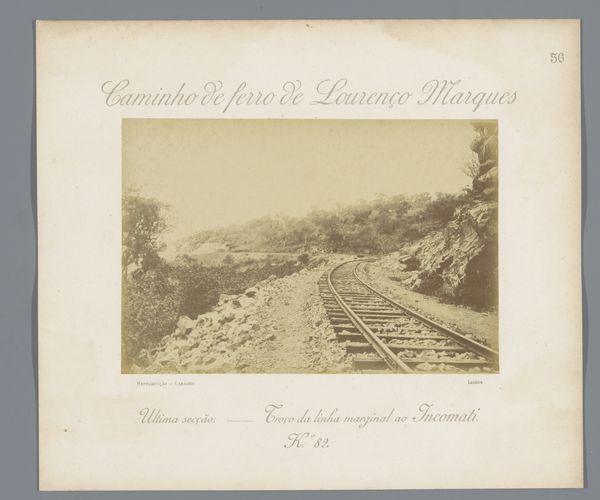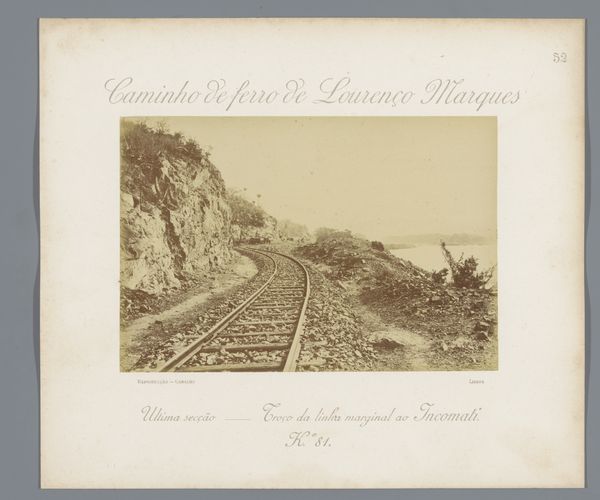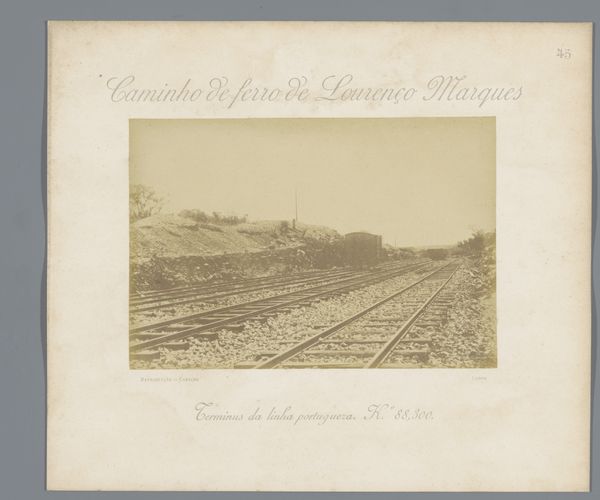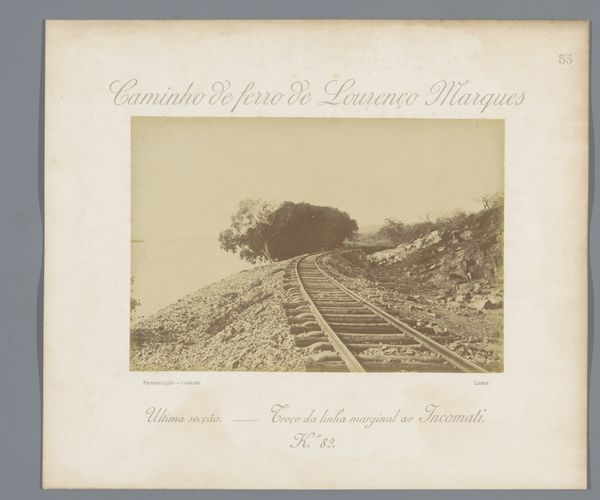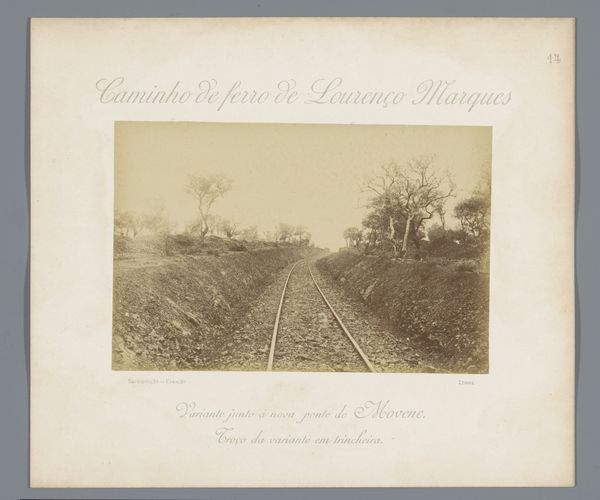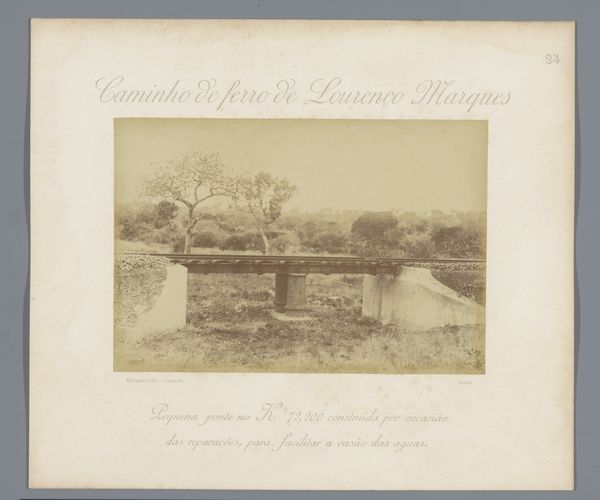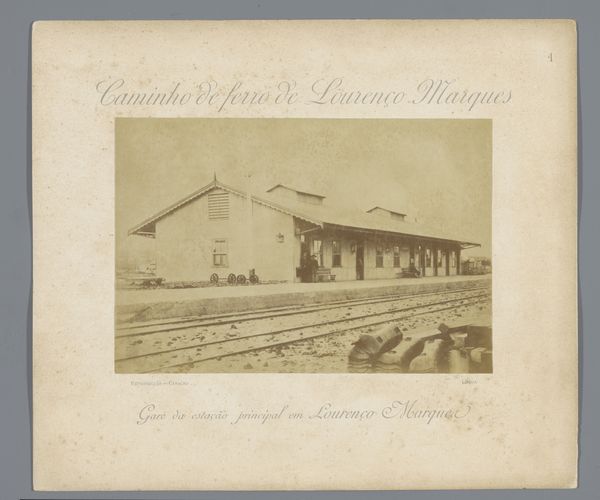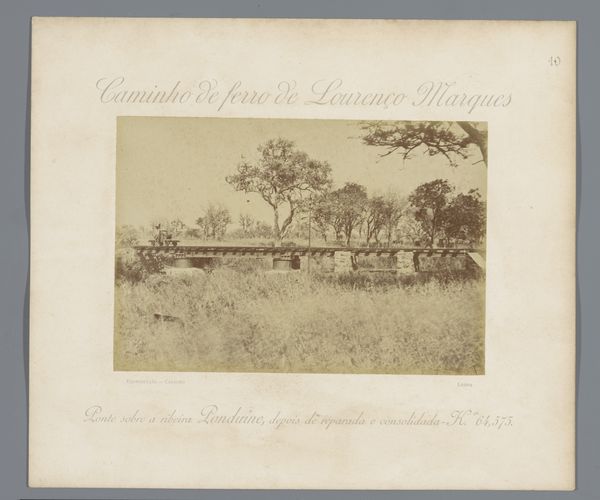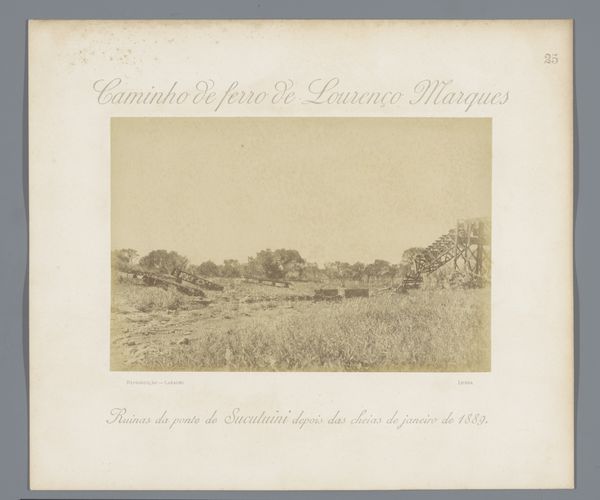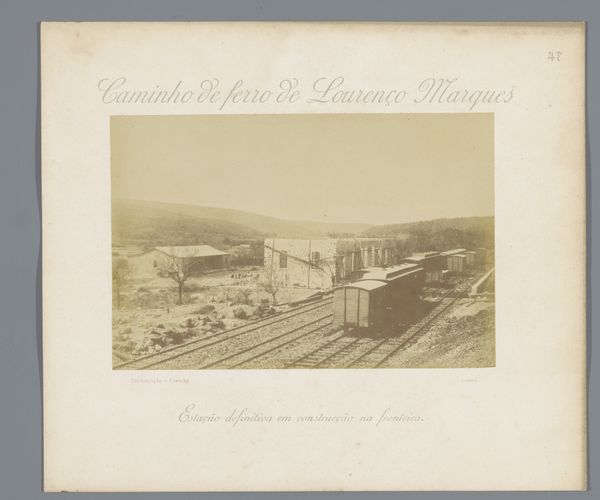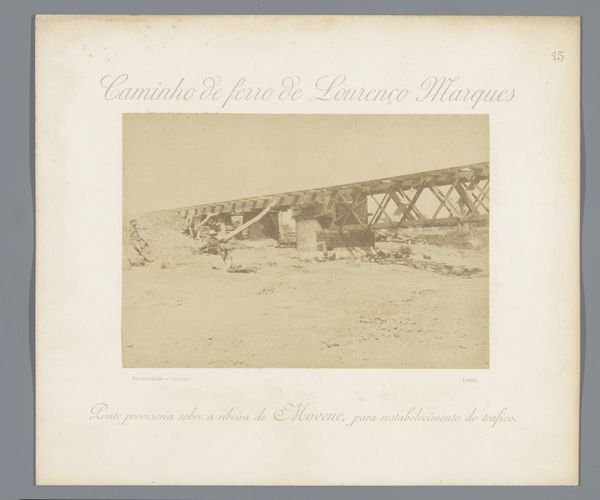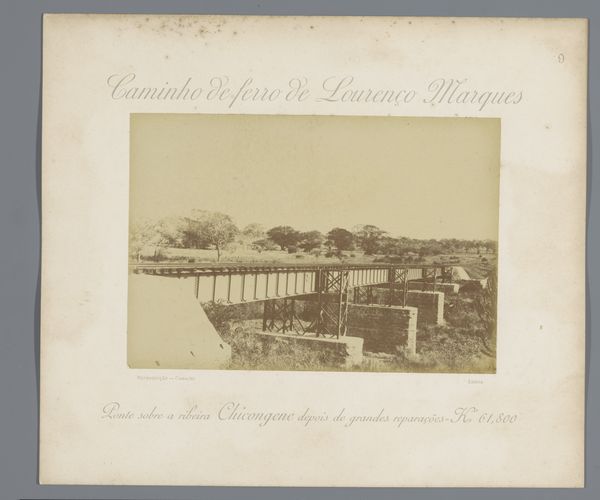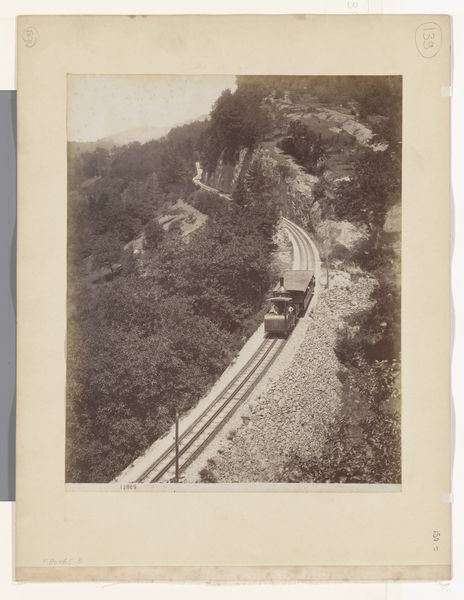
photography, gelatin-silver-print
#
landscape
#
photography
#
gelatin-silver-print
#
realism
Dimensions: height 113 mm, width 165 mm
Copyright: Rijks Museum: Open Domain
Editor: This is a photograph from around the 1880s by Manuel Romão Pereira called "Treinspoor in Mozambique," a gelatin-silver print. The strong lines of the railway receding into the distance are really striking. What do you see in this piece, from a formalist perspective? Curator: What strikes me most is the dialectic tension established by the converging lines of the track, versus the textures on either side. Notice how Pereira positions the train tracks centrally, establishing a strong sense of linear perspective, a recession into a vanishing point, immediately counterposed with rocky, stratified outcrops. Do you see how this sharp geometrical perspective creates a stark contrast to the textured surfaces, almost abstract shapes of the rocks that frame it? Editor: Yes, now that you mention it, the rocks are so tactile compared to the rails; almost like pure form versus manufactured line. So it's not about what is *depicted* in the photo, but rather the use of forms. Curator: Precisely! Think about the intentionality in balancing this stark contrast. Light and shadow dance on those rocks, giving them an almost sculptural presence, yet this is countered by the implacable lines, imposed in a deliberate construction of this railroad cut. Editor: So, the photograph becomes a record of contrasting materials and textures? Curator: Indeed, and how the very materiality of photography contributes. The monochromatic palette draws attention to form over color; it focuses our vision on composition. It's not merely a document, but an active formal engagement. The contrast between organic texture, and this very linear inorganic path cuts sharply into the landscape. Editor: I never would have looked at this photograph this way. Curator: The visual relationship speaks for itself, irrespective of any context surrounding its creation.
Comments
No comments
Be the first to comment and join the conversation on the ultimate creative platform.
